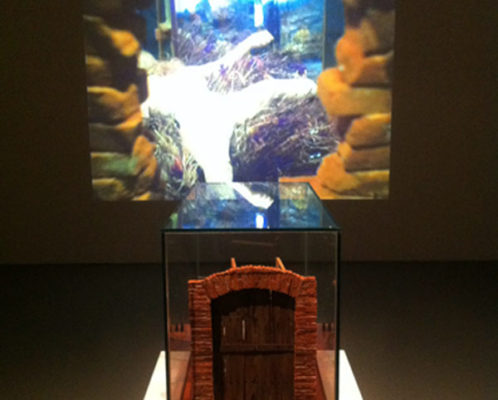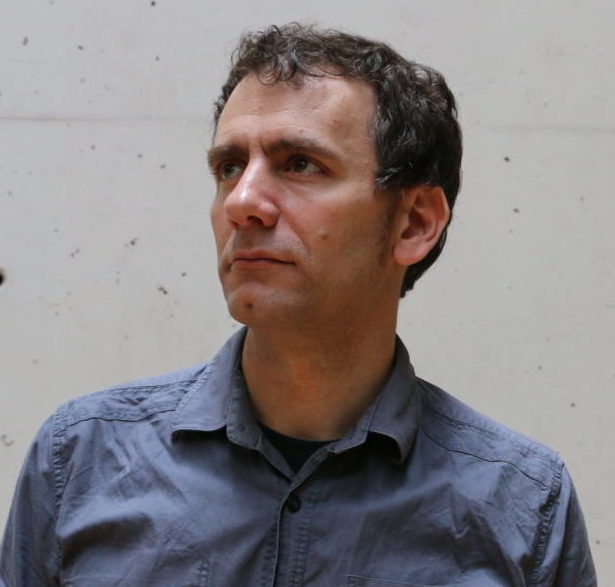Search
To search for an exact match, type the word or phrase you want in quotation marks.
A*DESK has been offering since 2002 contents about criticism and contemporary art. A*DESK has become consolidated thanks to all those who have believed in the project, all those who have followed us, debating, participating and collaborating. Many people have collaborated with A*DESK, and continue to do so. Their efforts, knowledge and belief in the project are what make it grow internationally. At A*DESK we have also generated work for over one hundred professionals in culture, from small collaborations with reviews and classes, to more prolonged and intense collaborations.
At A*DESK we believe in the need for free and universal access to culture and knowledge. We want to carry on being independent, remaining open to more ideas and opinions. If you believe in A*DESK, we need your backing to be able to continue. You can now participate in the project by supporting it. You can choose how much you want to contribute to the project.
You can decide how much you want to bring to the project.

A magnificent exhibition, that should immediately become a point of reference. A complex exhibition, that generates antagonism and joy in equal measure that stands out for its brutality, at the same time as for its delicacy. Ulf Linde opens his Marcel Duchamp, “De ou par Marcel Duchamp par Ulf Linde”, produced with the Moderna Museet and presented at the Art Academy in Stockholm.
A life dedicated entirely, and obsessively, to Marcel Duchamp. Ulf Linde, a curator avant la lettre, decided to begin making reproductions of the work of he who had changed the rhythm of art, in order to try and understand its internal logic. A mathematical logic, according to his theory. Reproductions of everything, almost perfect reproductions of ready-mades. Months and months investigating and looking at tiny details as well as for all possible information about Duchamp. The maximum apogee of Ulf Linde arrived when Duchamp himself signed one of the copies of “Le Grand Verre” as an original copy, –one of them, as Linde wasn’t in the end totally satisfied with the first one – to thank him for the approximation made in Stockholm. No doubt Duchamp would look favourably on someone in Stockholm minutely analysing all his work, generating a huge amount of documentation, films about how to reproduce a work of art, becoming something of an absolute expert in Duchampian ways and while not being Rrose Sélavy, being something like an anarchic avatar, obsessed with a possible mathematical formula that would complete the circle Marcel Duchamp.
So many authorised copies have resulted in the Moderna Museet having undoubtedly the best collection of Duchamp after Philadelphia. The obsession of a person trying to discover how the work of an artist functions, leads, now, to a result, a series of objects that become something more, that find themselves within the institution and serve to construct history. But which history? The history of Linde? The history of Duchamp? The history of reproducibility? The history of irony? The history of a disappearance? The history of a desire? A history of seconds? A history already constructed?
Today, closer to death, Ulf Linde has decided to organize an exhibition about Marcel Duchamp. More specifically about his Marcel Duchamp. An exhibition for him, for the double, for the shadow. Well, we have a museum, we have someone who has facilitated the museum important parts of its collection, we have the link of Linde with the Swedish Art Academy (he is also one of the academics who decides the Nobel for literature) we have Duchamp, and a desire to exhibit. The cards are on the table, and one senses a master stroke. But instead of a checkmate it’s a castling. The castling consists of the fact that the exhibition is not presented in the museum but in the building of the art academy. And everything goes smoothly. The museum isn’t tainted by a totally subjective and personalised vision of Duchamp, the academy manages to bathe itself in masses- so to speak, and Linde has his exhibition with Duchamp in a sacred place. It is customary for “prize” exhibitions of older artists to be held in the Academy, so that they can pass as is their due into history, but in this case it is not written from the local as we leap into a gesture of global interest.
It would be hard to present this exhibition in a museum. It is too strong, too good, it breaks all the norms and yet at the same time it is nothing more than an exhibition that wants to be a summary of a whole life, an obsession, and the work of Duchamp. Everything is well defined, everything works, it all has meaning and it is all a huge folly. Exhibitions within art institutions tend to be designed for the visitors, something considered from an institutional point of view, the ego should be hidden as much as possible even if it is everywhere. Obsession can’t be the point of departure. But here no, in the academy Linde acts without inhibitions and appears on all sides, in all the decisions, in every centimetre. To start with, he appears in the title of the exhibition with the same raking as Duchamp: “De ou par Marcel Duchamp par Ulf Linde”. In the web heading of the project Marcel Duchamp is written in lowercase and Ulf Linde in capitals, either that or the errors are also significant.
Linde knows to perfection the place, its history and its value. He decides to act not just in the exhibition rooms but also in the entrance, the corridor, in places that have symbolic value. To start with, he fills the academy with rails for wheelchairs. For his wheelchair. Ulf Linde is the visitor, the curator, the producer of the works, the one who decides everything, who invents the Duchamp that is presented. The external visitor is offered an itinerary within this obsession, a gaze tempered and directed by the text and by a map that is handed out on entering the exhibition. The pieces almost pass to a secondary level, what is important is to see how Linde approaches them, to see how he dares to open the exhibition rooms with a double portrait hidden behind mirrors: Duchamp and Linde, the two, face to face without seeing each other. The exhibition is, for example, the embodiment of Linde’s intent to understand a piece like “Étant Donnés”, through the creation of a meticulous scale model that unveils all the elements that can be glimpsed in Philadelphia. A model on a very small scale but one which contains layers and layers of work, a profound analysis of every detail, interpretations of the body, the sex, the distances, the lantern in the hand of the female body at the height of the waterfall in the landscape. As objects, as material.
The exhibition begins before it begins, with games and thousands of references. On the street, on entering the academy, a double door, a first hidden approximation to “Le Grand Verre” and “Étant Donnés”, a sort of warning shot about what a ready-made is. The academy itself becomes a ready-made, a game of meanings that accumulates layers and relations. Already in the monumental stairway accessing the interior, with the central presence of the rails for the wheelchair, there appears a grid of strings on the ceiling, that echo the way Duchamp participated in the famous surrealist exhibition in New York in ’42 as well as the presentation that defined the work of Duchamp in the Moderna Museet in ’89. The same reticulation will reappear in the exhibition room, in an exact reproduction of this room in the antique Moderna Musset that contains (and which the academy now contains), for example, “Boite en Valise”. Like a Russian doll on a return trip, in one of the exhibition rooms we find a reproduction of an exhibition room that has a reproduction of a series of works by Duchamp, that form a diminutive collection, that turns out to be the same as a collection in a museum, where what stands out is a copy of “Le Grand Verre” and a full scale reproduction of the urinal, also present in this room. Everything is the reproduction of something, everything points to something else or some other time that is not present, yet everything is physical and here.
At this point the exhibition is already a benchmark and should become a historic reference for museography, for contemporary art, for the evolution of the exhibition and for its approximation to art. But will it achieve the necessary diffusion to ensure the place it merits? That the exhibition is not within the museum plays against it, given that the global circuit is also dominated by grand events. It is not a big exhibition, but on few occasions do we find so much potential in parallel with so much curatorial positioning. It’s all so clean, without an abuse of over-saturation, but with a good use of layers of information. Almost as an example of the latter, one of the spaces is divided into two: the roof is lowered and a huge ramp is constructed – for the wheelchairs once again – that takes an interesting turn. A room, that is tilted a few degrees, is “created” in the air, in which are “hanging” pictures of reference from the museum’s collection; Picabia, de Chirico, Jean Arp. References that situate Duchamp, but at the same time, indicate that if the Moderna Museet has them, it is thanks to the work of Ulf Linde.
The exhibition will end –that is if it ends – with the model of “Étant Donné” and with the projection that it generates, bringing us closer to the visible parts in Philadelphia. The projection, the light, that shows us the way things are. Just before this little model, one has had to avoid the large reproduction of Tatlin’s tower, something akin to the image of another desire, of a defeat that Duchamp overcomes, to reach today, remaining open, still with thousands of possibilities, existing as this unavoidable reference that can fill with meaning a life of authentic copies.

Director of Index Foundation, Stockholm, exhibition curator and art critic. Yes, after Judith Butler it is possible to be several things at once. He thinks that questions are important and that, sometimes, to ask means to point out.
"A desk is a dangerous place from which to watch the world" (John Le Carré)